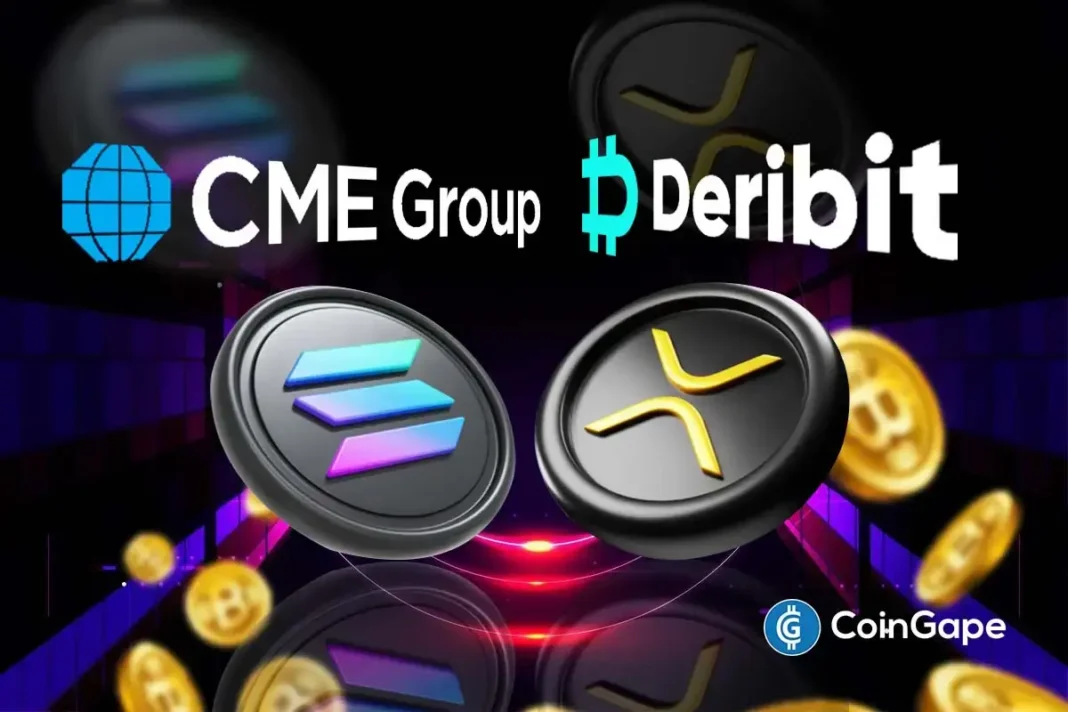Market Pulse
In a significant move signaling the continued maturation of the institutional cryptocurrency market, the Chicago Mercantile Exchange (CME) Group has announced the launch of options contracts for two prominent altcoins: XRP and Solana (SOL). This development arrives alongside a notable fee structure revision from leading crypto derivatives exchange Deribit, underscoring a dynamic shift in how institutional and professional traders are engaging with the digital asset landscape. These simultaneous events highlight a growing appetite for sophisticated hedging and speculative tools beyond Bitcoin and Ethereum, marking a new chapter for broader altcoin derivatives accessibility.
CME Broadens Its Crypto Derivatives Horizon
The introduction of XRP and Solana options on CME is a pivotal moment for these digital assets, granting institutional participants regulated access to price discovery and risk management instruments. Historically, CME’s crypto offerings were limited to Bitcoin and Ethereum futures and options, establishing a benchmark for institutional interest. Expanding this suite to include XRP and SOL suggests a growing confidence in the underlying assets’ liquidity, market integrity, and the sustained demand from large-scale investors.
- Enhanced Legitimacy: Listing on a traditional, regulated exchange like CME bestows a higher degree of legitimacy on XRP and Solana in the eyes of institutional investors and traditional financial firms.
- Sophisticated Trading Strategies: Options contracts allow for complex strategies such as hedging existing spot positions, generating yield, or speculating on price movements with defined risk parameters.
- Increased Liquidity: The availability of regulated options could attract new capital into the XRP and SOL ecosystems, potentially improving their overall market liquidity and price stability.
Deribit Adapts to Evolving Market Dynamics
Concurrently, Deribit, a dominant player in the crypto options and futures market, has announced adjustments to its fee structure. While specific details of the revisions would be critical for traders, such changes typically reflect competitive pressures, market demand, and efforts to optimize trading volumes and profitability. As institutional interest shifts and new regulated venues emerge, established platforms like Deribit must continuously innovate to retain their market share and appeal to a diverse range of clients, from retail to sophisticated institutional desks.
Deribit’s strategic adjustments often involve:
- Reducing maker fees to incentivize liquidity provision.
- Increasing taker fees to reflect the cost of immediate execution.
- Introducing tiered fee structures based on trading volume.
These adjustments are crucial for maintaining a healthy and competitive derivatives environment, ensuring that a variety of platforms cater to different segments of the crypto trading community.
Implications for XRP and Solana Markets
The ripple effects of CME’s new listings are expected to be significant for XRP and Solana. For XRP, despite its ongoing legal battles with the SEC, the CME listing provides a strong institutional endorsement, potentially mitigating some of the regulatory uncertainty surrounding it. For Solana, a high-performance blockchain, this move validates its growing ecosystem and increasing adoption among developers and users. The enhanced accessibility through regulated options could lead to:
- Greater price discovery efficiency.
- Increased trading volumes on both spot and derivatives markets.
- A potential influx of capital from traditional financial players seeking exposure to these assets in a regulated environment.
This dual development – CME’s expansion and Deribit’s adaptation – paints a picture of a rapidly maturing crypto derivatives landscape that is becoming increasingly integrated with traditional finance.
Conclusion
The simultaneous launch of XRP and Solana options on the CME and Deribit’s strategic fee revisions mark a pivotal moment for the cryptocurrency derivatives market. These developments highlight the accelerating institutional acceptance of a broader range of digital assets and the continuous evolution required of crypto-native exchanges to remain competitive. As traditional financial behemoths like CME expand their crypto offerings, and specialized platforms like Deribit refine their services, the digital asset ecosystem edges closer to mainstream financial integration, offering more robust and diverse tools for investors worldwide. This trend suggests a future where sophisticated risk management and speculative opportunities for altcoins become standard practice.
Pros (Bullish Points)
- Increased institutional legitimacy and access for XRP and Solana through regulated channels.
- Enhanced tools for sophisticated risk management and diverse trading strategies for institutional players.
- Potential for greater liquidity and capital inflow into the XRP and SOL ecosystems.
Cons (Bearish Points)
- Increased institutional influence could lead to higher market volatility if large players enter/exit rapidly.
- Complexity of options trading might pose risks for less experienced traders venturing into these instruments.
- Regulatory uncertainties, particularly for XRP, remain despite the CME listing providing some institutional endorsement.
Frequently Asked Questions
What does the launch of XRP and Solana options on CME signify?
It signifies increasing institutional acceptance and demand for a broader range of digital assets, offering regulated avenues for hedging and speculation, thereby maturing the crypto market.
How might Deribit's fee structure revision impact the market?
Deribit's adjustments are likely in response to competitive pressures and market dynamics, aiming to optimize trading volumes and maintain its position in the evolving derivatives landscape by attracting or retaining traders.
Are there any inherent risks associated with these new options products?
While options offer sophisticated risk management, they also involve complexity and can lead to significant losses if not managed properly, especially with underlying assets prone to high volatility.



